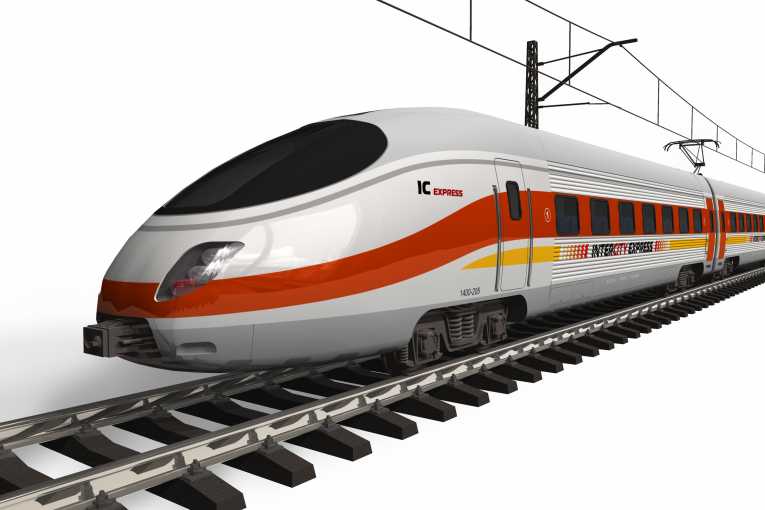China gets ridiculed by the West for its environmental record, and much of that criticism is well-deserved. But when it comes to high-speed rail - which many believe is the future of green travel -China can look down its nose at everyone else.
May 9, 2011, was a landmark day for train travel in the United States. The U.S. Transportation Secretary, Ray LaHood, was in Detroit to bestow nearly $200 million upon the State of Michigan. The money, which came in the form of an oversized check, was earmarked for improvements on existing train services and - in what has been one of Barack Obama's recurring domestic policy initiatives - the creation of high-speed rail lines, in this case between Detroit and Chicago. The current Chicago-Detroit route takes more than six hours, but with the aid of this $200 million, policy-makers and transportation experts are optimistic that increased speeds of up to 110 miles-per-hour could save passengers at least 30 minutes and inspire people to opt for train travel over driving. (Currently, it is quicker to drive than take the train.)
Because of the 14-hour time difference, when LaHood dropped by Michigan on May 9, it was already May 10 in China. And wouldn't you know it, that same day China had some big announcements for its own railway system.
The China Daily, Xinhua and other Chinese media outlets were awash with stories about the start of a one-month trial period, set to begin May 11, during which time China would begin testing the new high-speed line between Beijing and Shanghai. There were no photo-friendly novelty checks, but the line did cost an estimated $33.3 billion. And while the 30-minute improvement lauded by LaHood would indeed be convenient for the upper-Midwest, it pales in comparison to the nearly fives hours that are expected to be shaved from Shanghai-Beijing trip.
When finished, it will only take about 45 more minutes to cover the 779 miles separating Beijing and Shanghai than it will to traverse the 283 miles separating Detroit and Chicago.
Indeed, May 9 2011 and May 10 2011 marked watershed moments for U.S. and Chinese rail. But when looking at the differences between the two countries in terms of both achievement and ambition, China is way more than 14 hours ahead of the U.S. when it comes to train travel. And in that sense, China has one gargantuan leg up on the U.S. - and the rest of the world - when it comes to more environmentally friendly travel. For while the West can (and does) gripe about Chinese pollution, it is China that is positioning itself to move the world's biggest population around the world's fourth-biggest country in as green a way as possible.
China's emphasis on high-speed rail - as well as the United States' apathy - can be seen in the amount of money each nation is devoting to the matter. According to NPR, China plans to spend $300 billion on high-speed rail between 2010 and 2020. And that estimate could be far too low - the Sydney-based Lowy Institute for International Policy posits that China will spend as much as $600 billion between 2011 and 2015 alone. By contrast, the U.S. congress - in budget negotiations with President Obama, who has hailed high-speed rail as a green alternative to flying and driving - nixed a proposed $1.5 billion in high-speed rail from the 2011 fiscal-year budget, bringing the total amount of federal money currently allotted to high-speed rail down to $10.5 billion. Whatever the exact amount of China's expenditures, it dwarfs the U.S.
Partisanship and economics have thus far dominated the high-speed rail debate in the States. But the potential environmental benefits are garnering more and more attention. Blogging for the New York Times, Edward Glaeser, an economics professor at Harvard, analyzed the potential "greening" of traveling by train by looking at the 240-mile trip between Dallas and Houston.
Accounting for various factors, he concluded, "each 240-mile train trip eliminates 113 pounds of carbon dioxide for each passenger." He also wrote that "the total global-warming-related benefit of 1.5 million high-speed riders taken equally from cars and planes is $4.24 million a year."
A study released by the Institute of Transportation Studies at UC-Irvine says that trains require one-fifth the total energy per passenger as that of a one-occupant car, and one-tenth the energy of a commercial airplane. In addition, the researchers wrote that carbon dioxide emissions would be reduced by almost a half-billion pounds by 2035 if train-passenger targets were met.
China takes an extreme amount of heat for its robust contribution to the world's greenhouse gas pollution - and rightly so. The milky, palpable pollution blanketing China's skies often shrouds the tops of buildings and can turn the sun into an eerie midday moon. No studies are needed to know that that is not a healthy or sustainable way to live.
But while the U.S. and EU and other nations bemoan China's pollution problems, China has poured more resources into high-speed rail than any country in the world. As a result, the World Bank estimates that by the end of 2012, China will have more high-speed rails than the rest of the world combined. China has invested in a transportation infrastructure designed to mitigate travel-related pollution. And it doesn't even waste paper on oversized checks to celebrate itself.










